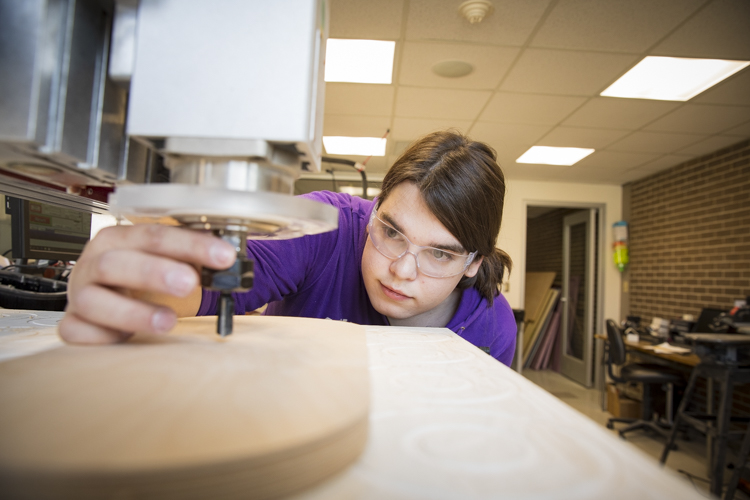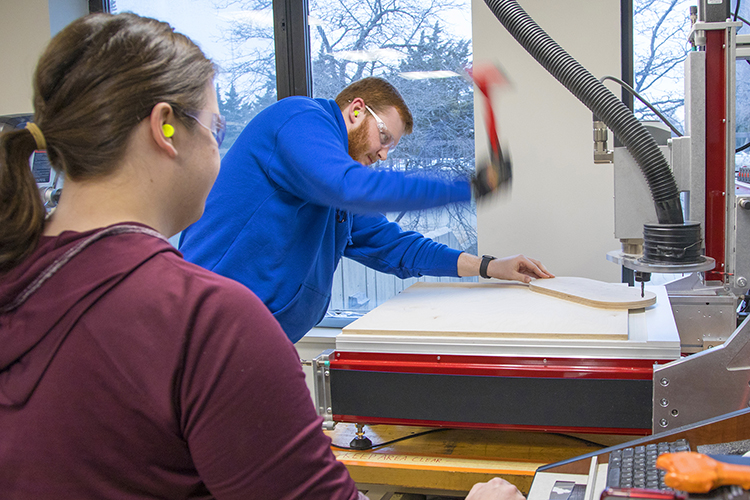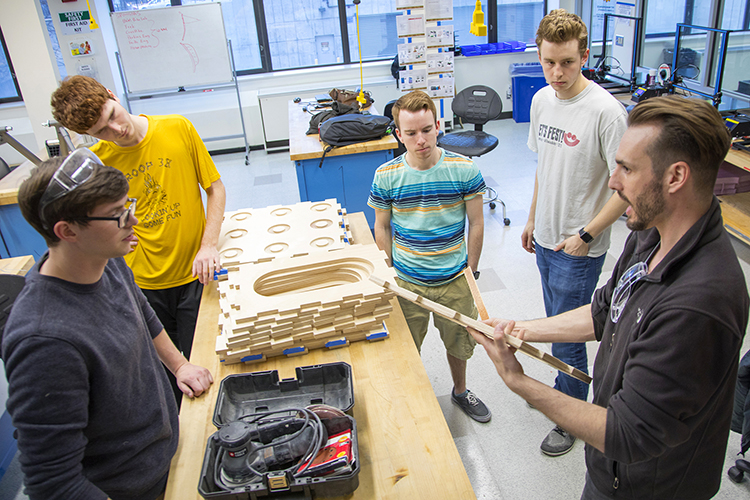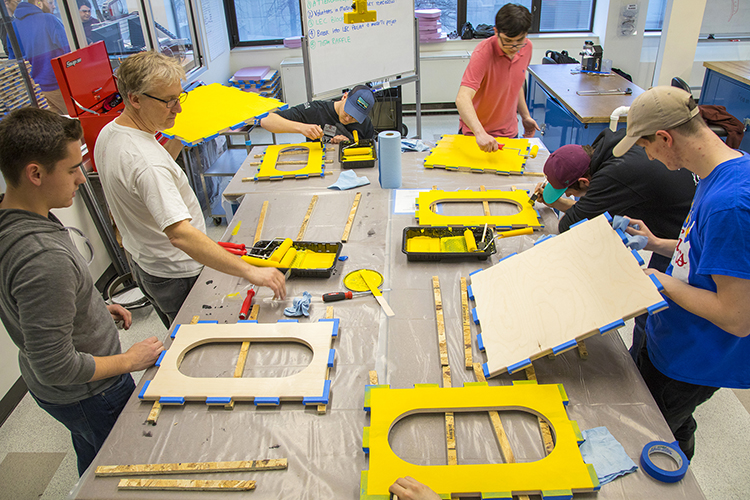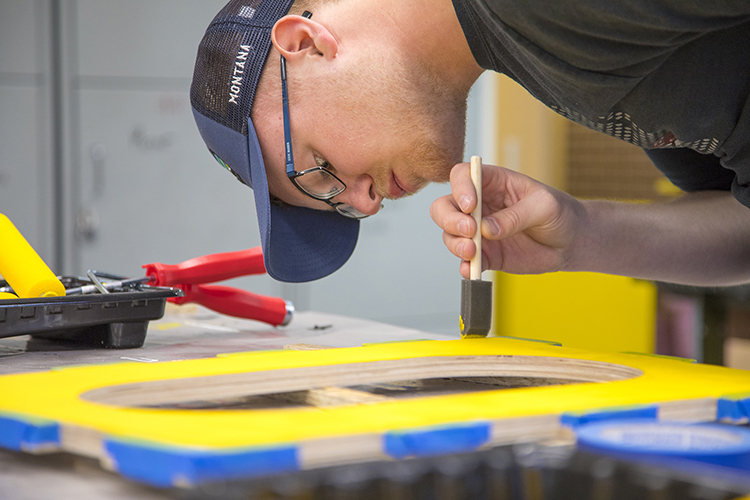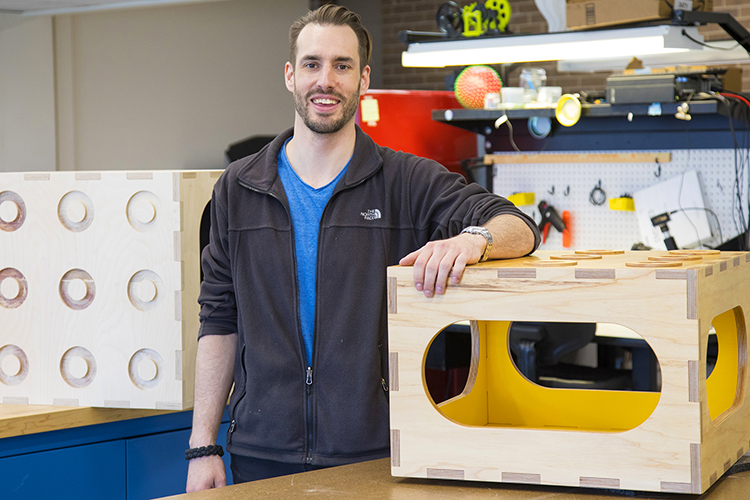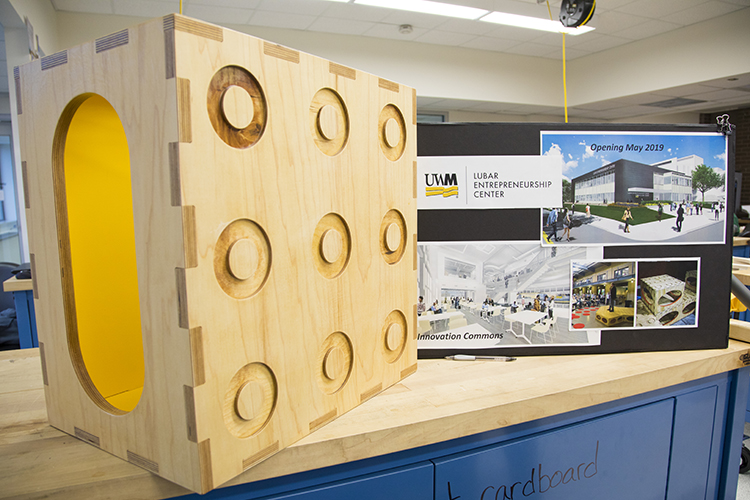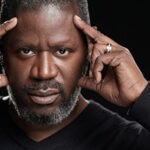You could call it furniture, but describing the modular cubes that UWM students are constructing in the campus maker space as “building blocks” is accurate too. These multipurpose pieces range in size and can be used for seating and coffee tables, grouped to form a stage or stacked to divide a room.
Designed at Stanford University’s Institute of Design, the cubes have been crafted in signature Panther colors and will take up residence at the Lubar Entrepreneurship Center. Look closely and you can see the striped effect of the plywood in the thickness of the dove-tailed joints.
Twenty of the cubes will be completed by May 8 when the LEC opens to the public. From there, more can be made, said Bobby Erickson, president of the UWM Prototyping Club, which is constructing the modular furniture in the campus maker space on the first floor of the EMS building.
That location makes it convenient for students in the College of Engineering and Applied Science. But the space is open to any UWM student. The Prototyping Club – some 70 members who are majoring in disciplines from ceramics and theater to education and biology – is a major user of the space.
Erickson himself isn’t your traditional undergrad. He left college after three years without his degree, and ran a business before enrolling at UWM last year to finish his bachelor’s degree.
“Like a lot of people, I just love to tinker,” he said.
With the equipment in the maker space students can work on group projects or build their own. Equipment includes computer-controlled routers, mills and lathes, soldering gear and a dozen 3D printers.
For this project, members of the Prototyping Club began with 2-by-2-foot squares of plywood. CNC routers are used to cut out “interlocking teeth” of the dove-tailed joints around the edges.
Next, the 2×2 slabs are sanded, painted and embellished with raised wooden rings that also were carved out by the router, following specifications laid out in the CAD software.
Working across disciplines is an aspect of creating that appeals to Erickson – and he believes that’s why he is drawn to math: Applying math to other fields is becoming essential for driving new ideas.
“When you study something in isolation you don’t realize just how many applications it could have,” he said. “Crossing paths is where innovation comes from.”
